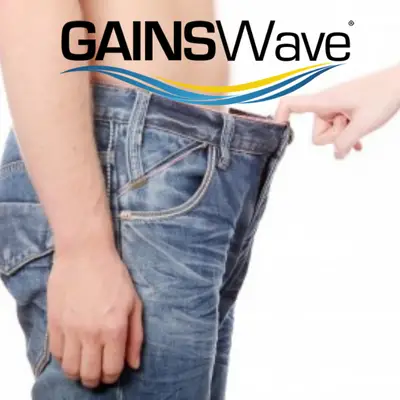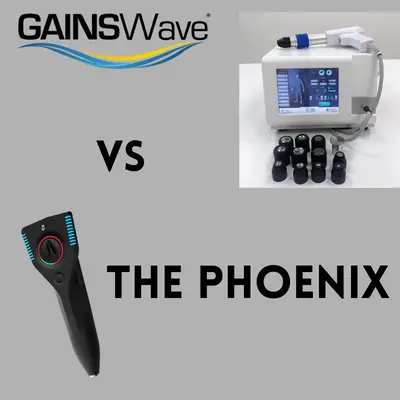While there are many forms of therapy for pain, TENS and massage are often recommended as some of the best tools for pain relief. But which is better to use in your situation?
Deciding between a TENS unit or massage depends on your own preferences. If TENS hurts you or your health doesn’t allow the use of it, you should use massage and vice versa. They do the same job in a different way, with massage offering additional benefits like stress relief and relaxation.
In general, both of these tools are effective in what they do. If you want to know more about how to apply them and which one to use in certain situations, read on, and learn how to choose the best pain-relief therapy for you.
How Does a TENS Unit Work?
TENS units, or transcutaneous electrical nerve stimulation units, use electrical stimulation to block pain. They are sometimes confused with EMS units, which are used to cause muscle contractions, so be careful not to mistakenly get the wrong one. The two devices look similar, so make sure you’re buying the right type before making a purchase.
TENS units are used for pain relief and, as such, should be applied in a comfortable setting — patients in pain don’t need any more of it. Note that while a TENS unit could cause muscle contractions if in a high setting, this is not the desired effect, and you probably won’t like how it feels.
There are, of course, combination devices that provide both pain relief and muscle contractions, depending on how you set them up. Note that, in some cases, TENS units can also increase your range of motion.
What Does TENS Do?
TENS is generally used to relieve pain in acute and chronic pain patients who need immediate pain relief, although the effects of this therapy can last for about 24 hours with prolonged use. It can also be used to reduce spasms in the muscles, as stated by the NHS. These muscle spasms are often caused by period, arthritis, back pain, and various injuries caused by athletic activities.
A study found that TENS is also effective in treating delayed onset muscle soreness in athletes. Naturally, exercise is excellent at doing the same thing, but it’s not always practical. TENS, on the other hand, is easy to place in a pocket and use as needed.
TENS units are used either at low or high intensity. High-intensity electrical impulses average at 90 Hz, and some research has shown that TENS units are only effective at high intensities. In this setting, the impulses from TENS block pain signals that nerves send to the brain. In essence, the brain is too distracted to notice pain signals because of the TENS signals.
At lower intensities, this device claims to boost the production of endorphins, which are the body’s natural painkillers.
How to Use TENS
You should use TENS only if one of your medical professionals recommends it since not everyone can use it and get the benefits. Some doctors will recommend its use with painkillers or other forms of therapy.
While you do control the settings, you should keep in mind that you will have to use this device for only 20 minutes at most. Keeping the electrodes with adhesive pads on one spot for too long can cause numerous side effects and irritation.
Of course, you can move it to a different location. You can use it several times a day, depending on your condition and needs.
Because there is no single TENS device brand but many, you should follow the instructions on your device carefully.
In general, you should clean the skin where you want to place the pads with rubbing alcohol and let it dry. You should also keep the pads at least an inch apart (2-3 cm), but even more is recommended. When using the unit, the pads should be placed on both sides of the pain — if the pain is wider, it may not work as well, but there’s a chance with proper pad placement.
Use the conductive gel and make sure that the pads are not moving around. If you want to move (possibly exercise), use tape to make sure that the pads stay on. You shouldn’t feel pain while using TENS, so just change the settings to lower intensity if you do feel some pain.
TENS units are generally safe to use, and they will provide comfort for people in pain. However, there’s research that states that you can build a tolerance to TENS after a lot of use. So, do your best to only use TENS when necessary.
After you are done using TENS, you should wash and apply lotion to the area to avoid skin irritation, which can only increase pain.
You should never place pads on the skin that is damaged in any way — burned, bruised, scraped, cut, etc. It could increase the amount of pain that you are feeling. The electrodes should never be on your eyes or on the front or at the side part of the neck. If you place them there, you could cause spasms or pain.
You shouldn’t use TENS in places where your sensation is reduced or when you are showering. In general, avoid any water when using TENS. You shouldn’t use it when driving either, although you could use it while exercising.
Don’t use TENS too much at once. This could cause you additional pain and make things worse, especially if your skin is sensitive. Start slow and build from there. Check with your doctor how many times a day you should use this device.
Using a TENS unit properly can help you avoid negative effects. And there are some that can happen—for example, uncomfortable tingling, skin irritation, etc.
Which Conditions Can Be Improved by TENS?
TENS units are most commonly used by patients with chronic pain like arthritis. However, people with injuries caused by work or exercise, period pains, back, neck, or knee pain can use it too, although it’s not as common.
The usage of TENS could help you use fewer painkillers, and it’s not addictive, so there is no danger for you in that sense. It will take some time to get used to TENS, though, because you have to find settings that work best for you — the optimal balance between pain relief and comfort.
TENS units are sometimes used to provide pain relief during the early stages of labor, but keep in mind that it’s not recommended that pregnant women use it in their lower abdominal area. You can rent a TENS unit for that occasion.
Before purchasing a TENS device, you should probably test one out with a therapist or a friend who has it, to determine whether it really helps you or not.
How Does Massage Work?
Massage therapy is another form of treatment recommended for pain relief. In some cases, it can decrease swelling too. Massage is performed by a therapist — and this is generally the best solution — but if it’s not available immediately, a massager device can also help if applied to affected areas.
A therapist will stroke your affected areas repeatedly. This movement will move the fluid to your joints, which will make it easier for your body to absorb. Massage, no matter how beneficial — and just like TENS — is not recommended for pregnant women, those with heart issues, etc.
There are several types of massage, as well. For example, Swedish massage uses this repetitive motion to move fluid around as well, but it also works on the lactic acid release from your muscles. All of this decreases pain and relieves tension from your muscles.
Massage also reduces anxiety, which makes the body more relaxed. This helps the pain-relief too. You’ll feel less stressed, and your muscles will relax. Of course, massage is still being researched and studied as a form of pain relief.
Science on Massage for Pain
However, there have been numerous studies into massage for back pain, neck pain, hand pain, etc. For example, one study found that the pain in your hands can be reduced by massage, and it can improve the strength of your grip with repeated therapy (four times a week). Some of these techniques were also used by test subjects at home.
Hand massage managed to make them sleep better and also reduce their anxiety levels. Another study found that a massage that lasts for an hour and is repeated at least two times a week for four weeks can relieve neck pain.
Massage means applying pressure to affected areas as well, although the level of this pressure varies. Some people, for instance, don’t like deep tissue massage as it seems painful to them. However, massage shouldn’t be painful, and you can tell your massage therapist what feels good and what doesn’t.
Depending on your condition, a lighter touch may be better for you, while some people may enjoy a deeper massage. If you have chronic fatigue syndrome, you will probably like only the lightest pressure.
Does Massage Have Any Side Effects?
Massage is in no way harmful. But, you still have to avoid it in certain conditions.
- Inflamed skin shouldn’t be massaged since it can make it worse.
- If you have an infected area, you shouldn’t have a massage in that area since the infection can spread.
- If you have heart issues, you shouldn’t have a massage.
- Certain skin conditions are not best suited for a massage since they can increase irritation.
- People with phlebitis should avoid massage.
- As mentioned, pregnant women shouldn’t get massages.
When you have an issue that could be helped by a massage therapist, ask your doctor to recommend a professional that could help you, considering your other health issues.
Relaxation and Mechanical Response to Massage
Massage is known to cause some changes. There are mechanical and relaxation responses that together cause emotional and physical benefits.
A relaxation response, for instance, is an involuntary response of your body as your massage therapist applies different pressure levels and techniques. You’ll feel safe and comfortable. If you’re not, tell your massage therapist how you feel.
Your breathing will slow down, as well as your blood pressure, heart rate, etc. Your stress levels and anxiety will decrease, and you’ll produce serotonin, which will affect your emotional state positively. However, more studies are needed to check what the connection between massage and positive effect on the brain is.
Massage can decrease the risk of:
- Hypertension
- Anxiety
- Fatigue
- Digestive issues
- Arrhythmias
- Sexual dysfunction
Mechanical response to a massage is another effect you’ll notice. Your blood circulation will improve, and your muscles, tendons, and ligaments will relax. These effects come from both the physical treatment of the skin — pressure, and touch — but also the chemical release that happens because of the touch.
Better circulation can move more oxygen to your muscles, making them healthier and more functional. As muscles relax, the pain will be reduced. Organs also benefit from the massage, as tension in the muscles sometimes increases pain in the organs. This is often seen in period pain when pain in the lower back causes more pain in the lower abdominal area.
Here are some ways massage reduces pain:
- It boosts blood flow to painful areas, which get warmer because of it and become more functional.
- Massage triggers the release of natural painkillers in our bodies.
- According to some studies, massage increases the flow of oxytocin, which makes you feel calm and happy.
- One Stanford neuroscientist has stated that massage can help the brain forget about other pains.
Studies confirm many of these effects. In fact, one recent study has shown that it can also decrease chronic pain in some patients, especially if the painful area is the lower back. It was so helpful that 74% of patients from the study stated that massage was very helpful in reducing their pain, as opposed to 46% of those who did acupuncture.
Massage can also help cancer patients with their chronic pain, as one study has shown — it managed to reduce pain, nausea, and anxiety by about 50%.
When to Use TENS and When to Use Massage for Pain Relief?
TENS produces electrical impulses that decrease the pain signals that nerves send to the brain. This helps relieve pain, and your muscles relax, at the same time boosting the production of endorphins — the natural pain killers in the body.
TENS is used for several conditions like period pain, arthritis, endometriosis, back or neck pain, and various injuries. TENS works best for nerve pain in narrow, particular areas. On the other hand, massage is there to boost the flexibility and range of motion of your joints, help with back and neck pain, shoulder pain, and also boost the production of endorphins.
These two methods, as mentioned, are very similar, and they can be used for similar issues.
However, massage also helps with stress and related issues, bad posture, etc. Massage uses soft tissue manipulation to deliver pain relief, stimulating the movement of fluids throughout the body, and reducing swelling.
Naturally, these two treatments are very similar in the results they produce, but not in the method. While massage uses touch and pressure, TENS units use electrical stimulation. For that reason, many people find TENS less attractive. Some are so sensitive that even the lowest TENS setting makes them uncomfortable. So, these people should not use this device, and they should definitely use a massage.
At the same time, massage can be painful, too, if too much pressure is applied. In this case, you have to talk to your therapist and come up with a technique and pressure degree that suits you. Over time, they will know what to do, and you won’t have any issues.
Of course, you can also combine massage therapy and TENS unit treatment, as this is widely utilized by therapists too. For example, you can have a TENS device at home and use it for immediate relief until you reach your therapist and get a massage.
In a way, TENS is more practical since it’s a small device you could carry with you everywhere, while proper, effective massage requires trained hands. Athletes with injuries or people with chronic pain often can’t wait until their therapist is available, so they use TENS.
A good rule of thumb is also to use TENS if you have a health condition that doesn’t allow the use of massage and vice versa.
Conclusion
Whether TENS or massage therapy is better for you will be up to your own preferences and needs. However, both can be used in combination — as long as you enjoy it, and it’s comfortable for you.
In any case, remember to consult your doctor or a medical professional that works in pain relief therapy and ask for recommendations based on your health condition and the amount of pain that you feel. If any of these two pain relief methods begin to cause you discomfort, stop using them, or use a lower intensity (lighter touch in massage).
Sources
- NCBI: Response of plasma beta-endorphins to transcutaneous electrical nerve stimulation in healthy subjects.
- NCBI: Effect of low- and high-frequency TENS on Met-enkephalin-Arg-Phe and dynorphin A immunoreactivity in human lumbar CSF.
- NCBI: Using TENS for pain control: the state of the evidence
- NCBI: Transcutaneous Electrical Nerve Stimulation (TENS)
- NCBI: Effectiveness of Transcutaneous Electrical Nerve Stimulation for Treatment of Hyperalgesia and Pain
- University of Iowa: Transcutaneous electrical nerve stimulator (TENS
- Nursing Times: Exploring the evidence for using TENS to relieve pain
- NCBI: Therapeutic effects of massage and electrotherapy on muscle tone, stiffness and muscle contraction following gastrocnemius muscle fatigue
- NCBI: Massage Therapy for Pain and Function in Patients With Arthritis: A Systematic Review of Randomized Controlled Trials.
- NCBI: Effectiveness of Massage Therapy for Chronic, Non-malignant Pain: A Review
- NCBI: Immediate Effect of Therapeutic Massage on Pain Sensation and Unpleasantness: A Consecutive Case Series
- NCBI: Comparison of Deep Tissue Massage and Therapeutic Massage for Lower Back Pain, Disease Activity, and Functional Capacity of Ankylosing Spondylitis Patients: A Randomized Clinical Pilot Study
- NCBI: Effectiveness of massage therapy for shoulder pain: a systematic review and meta-analysis
- NCBI: The Effects of Massage Therapy on Pain Management in the Acute Care Setting
- NCBI: The Impact of Massage Therapy on Function in Pain Populations—A Systematic Review and Meta-Analysis of Randomized Controlled Trials: Part I, Patients Experiencing Pain in the General Population
- Harvard University: Therapeutic massage for pain relief
- Pain Scale: Use These Types of Massage for Chronic Pain
- NCBI: Complementary and Alternative Medicine in Cancer Pain Management: A Systematic Review
- Research Gate: Massage for Low Back Pain: An Updated Systematic Review Within the Framework of the Cochrane Back Review Group
- NCBI: Five-week outcomes from a dosing trial of therapeutic massage for chronic neck pain.
- NCBI: Hand pain is reduced by massage therapy.





2 responses to “TENS Unit vs. Massage: Which Is Better?”
[…] the treatment can be from 20-30 minutes and can be done several times throughout the day. Most TENS units have a pulsating massage setting and I have found that this works well for alleviating hip […]
[…] unit devices can help relax muscles by delivering a subtle electric pulse that feels like a massage. It can loosing tight muscles and relieve pain associated with soreness such as after a […]